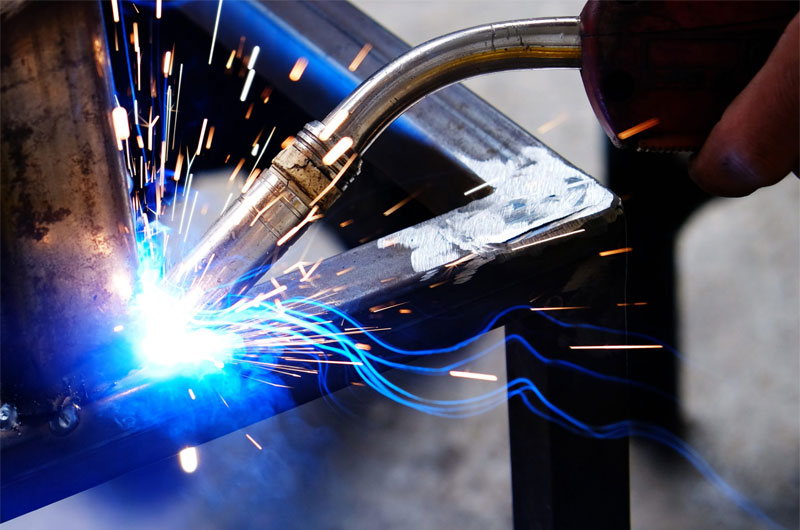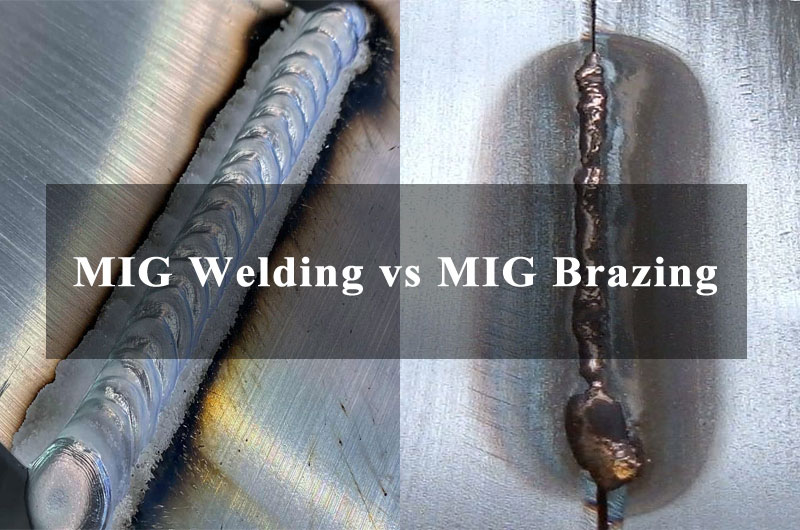In the world of metal fabrication, joining processes play a vital role in shaping structures, assembling machinery, and creating durable products. Two popular methods, MIG welding and MIG brazing, often come up in automotive, aerospace, and manufacturing applications.
While both techniques use a similar process and equipment, they differ significantly in their applications, filler materials, temperatures, and metallurgical impacts.
Understanding the distinctions between MIG welding and MIG brazing helps professionals choose the right process for their specific needs.
What is MIG Welding?

MIG (Metal Inert Gas) welding is a process that uses an electric arc formed between a consumable wire electrode and the workpiece metal to fuse them together. A shielding gas—usually inert or semi-inert, such as Argon or an Argon-CO₂ blend—protects the weld pool from atmospheric contamination.
MIG welding involves high heat and is suitable for a wide range of metals including carbon steel, stainless steel, and aluminum.
Advantages of MIG Welding
- Strong Structural Joints
MIG welding creates metallurgical bonds, resulting in high-strength joints suitable for load-bearing applications. - Versatility
It can be used on thick or thin metals, in various positions, and on different materials. - Speed and Efficiency
The continuous wire feed allows for rapid welding with minimal downtime. - Minimal Cleanup
When properly executed, MIG welding produces clean welds with little spatter or slag, reducing post-processing efforts. - Automation Friendly
MIG welding is easily adaptable to robotic systems for mass production.
Disadvantages of MIG Welding
- Heat Distortion
High heat input can warp thin materials or affect nearby components. - Oxidation Risk
If shielding gas coverage is inadequate, the weld area may oxidize or suffer from porosity. - Requires Clean Surfaces
Contaminants like oil, rust, or paint must be removed prior to welding for strong bonds. - Not Ideal for Dissimilar Metals
MIG welding struggles to bond dissimilar metals like steel to aluminum without specialized techniques.
What is MIG Brazing?

MIG brazing is a process that also uses a MIG welder, but instead of melting the base metals, it uses a lower-temperature filler metal—usually a copper-silicon or bronze alloy—to bond the metals. The filler melts and flows into the joint by capillary action, similar to traditional brazing methods, but the arc is used to deposit the filler rather than a torch.
Since the base metals do not melt, MIG brazing is considered a more “gentle” joining method, ideal for heat-sensitive materials like high-strength steels.
Advantages of MIG Brazing
- Low Heat Input
This reduces the risk of warping and preserves the mechanical properties of thin or heat-sensitive materials. - Ideal for Galvanized Steel
It minimizes burn-through and zinc evaporation, preserving corrosion resistance in automotive panels. - Good for Dissimilar Metals
MIG brazing is better suited for joining different types of metals without causing metallurgical incompatibilities. - Clean Finish
Produces a neat, golden-colored bead with minimal spatter and distortion. - Less Risk of Cracking
The low thermal impact reduces residual stress and cracking, especially in hardened steels.
Disadvantages of MIG Brazing
- Lower Strength Joints
Since the base metals don’t fuse, brazed joints typically have lower tensile strength compared to welded joints. - Requires Tight Fit-Up
Proper capillary action demands small gaps between metal surfaces, which may not always be achievable. - Limited to Certain Alloys
Not all materials are suitable for brazing; aluminum, for example, requires special considerations. - Filler Metal Cost
Brazing wires, especially copper-silicon alloys, can be more expensive than typical welding wires.
A Comparison Chart Between MIG Welding and MIG Brazing
| Feature | MIG Welding | MIG Brazing |
|---|---|---|
| Process Type | Fusion (melts base metals) | Non-fusion (melts only filler) |
| Filler Material | Steel, aluminum wire | Copper-silicon, bronze wire |
| Temperature Range | ~1400–1600°C | ~900–1000°C |
| Base Metal Melting | Yes | No |
| Joint Strength | High | Moderate to low |
| Heat Distortion Risk | High | Low |
| Best for | Structural welds, thick metals | Thin metals, galvanized steel |
| Spatter and Cleanup | Moderate | Minimal |
| Corrosion Resistance | May require coating | Excellent for galvanized materials |
| Dissimilar Metals | Not ideal | More compatible |
| Ease of Automation | Excellent | Excellent |
How to Choose the Correct One?
The choice between MIG welding and MIG brazing largely depends on material type, joint strength requirements, and project specifications.
- Choose MIG Welding When:
- You need structural strength and a metallurgical bond.
- You’re working with thicker materials or load-bearing parts.
- The application demands high impact resistance and durability.
- The metals are similar and weldable, such as mild steel to mild steel.
- Choose MIG Brazing When:
- The base material is heat-sensitive, such as advanced high-strength steels (AHSS) or galvanized panels.
- Corrosion resistance is crucial, especially in automotive or outdoor applications.
- You need to join dissimilar metals without fusing them.
- Appearance and minimal distortion are priorities.
In the automotive industry, for example, MIG brazing has become increasingly popular due to the increased use of galvanized and ultra-high-strength steels that cannot withstand the high heat of MIG welding. Conversely, in heavy machinery and structural steelwork, MIG welding remains the go-to due to its unmatched strength and durability.

